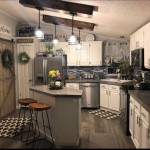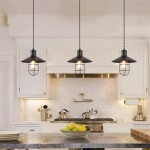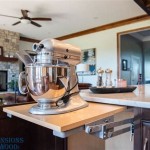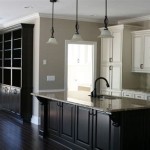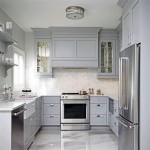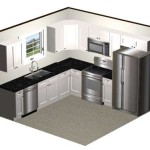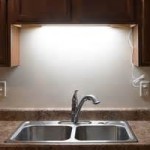Kitchen Refinishing: A Transformation with Before and After Examples
Kitchen refinishing presents a cost-effective alternative to a complete kitchen remodel. It focuses on updating the existing cabinetry, often involving cleaning, sanding, repairing, and applying new finishes. The objective is to enhance the aesthetic appeal and extend the lifespan of the cabinets without the significant expense and disruption associated with replacing them entirely. This article will explore the process, benefits, and demonstrate the impact of kitchen refinishing using before and after examples.
One of the primary advantages of kitchen refinishing lies in its cost-effectiveness. A kitchen remodel, including new cabinets, countertops, and potentially updated appliances, can easily reach substantial financial figures. Refinishing, however, typically costs a fraction of this amount, allowing homeowners to allocate resources to other areas of the home or simply save money. Furthermore, refinishing projects are generally completed much faster than full remodels. The process usually takes days rather than weeks or months, minimizing disruption to the household.
Beyond the financial and time savings, kitchen refinishing also offers environmental benefits. By preserving existing cabinets, it reduces the need for new materials, lessening the demand for timber and minimizing waste sent to landfills. This aligns with principles of sustainability and responsible resource management.
Understanding the Kitchen Refinishing Process
The kitchen refinishing process involves several key steps, each contributing to the overall transformation. These steps may vary slightly depending on the specific condition of the cabinets and the desired finish, but the core principles remain consistent. A thorough assessment of the existing cabinets is crucial. This involves identifying any damages, such as scratches, dents, or water damage, and determining the overall structural integrity of the cabinets. This assessment informs the subsequent preparation and repair stages.
Preparation is arguably the most important stage in the refinishing process. It typically begins with removing all hardware, including knobs, pulls, and hinges. The cabinet doors and drawers are then carefully removed from the cabinet boxes. The surfaces are thoroughly cleaned to remove grease, dirt, and any existing finishes. This cleaning often involves using a degreasing agent and scrubbing to ensure a pristine surface. Sanding is then performed to create a smooth, even surface for the new finish to adhere to. The level of sanding required depends on the existing finish and the desired outcome. For instance, if the cabinets have a glossy finish, more aggressive sanding may be necessary to remove the sheen and create a porous surface. Any damages identified during the initial assessment are addressed during this stage. Dents and scratches can be filled with wood filler, and loose joints can be reinforced with wood glue and clamps. The goal is to restore the cabinets to a sound and stable condition before applying the new finish.
Once the cabinets are properly prepared, the application of the new finish can begin. There are several options available, including paint, stain, and varnish. The choice depends on the homeowner's aesthetic preferences and the desired level of durability. Paint provides a wide range of color options and can be applied in various sheens, from matte to gloss. Stain enhances the natural grain of the wood and provides a warm, rich tone. Varnish provides a protective coating that enhances the durability of the finish and protects against moisture and scratches. The finish is typically applied in multiple coats, allowing each coat to dry completely before applying the next. This ensures proper adhesion and a smooth, even finish. After the final coat has dried, the hardware is reattached, and the doors and drawers are reinstalled. This completes the refinishing process, resulting in a revitalized kitchen with updated cabinetry.
Before and After: Visualizing the Transformation
The true impact of kitchen refinishing is best illustrated through before and after examples. Consider a kitchen with outdated oak cabinets, characterized by a yellowed finish and worn hardware. Before refinishing, the kitchen appears dated and dimly lit. The oak cabinets, while structurally sound, detract from the overall aesthetic appeal of the space. After refinishing, the same cabinets are transformed with a fresh coat of paint in a neutral color, such as white or gray. New hardware, such as brushed nickel pulls, replaces the old, outdated knobs. The result is a bright, modern kitchen that feels significantly larger and more inviting. The transformation is remarkable, achieved without the expense and disruption of replacing the cabinets entirely.
Another example involves cabinets with a dark, stained finish. Before refinishing, the dark cabinets absorb light, making the kitchen feel small and cramped. The dark stain may also appear dated, contributing to an overall sense of stagnation. After refinishing, the cabinets are stripped of their dark stain and refinished with a lighter stain or paint. This instantly brightens the kitchen and creates a more open and airy atmosphere. The lighter finish reflects light, making the space feel larger and more welcoming. The combination of lighter cabinetry and updated hardware can completely revitalize the kitchen's aesthetic.
A further illustration involves cabinets with significant wear and tear. Before refinishing, the cabinets may exhibit scratches, dents, and water damage. The finish may be peeling or chipping, revealing the underlying wood. After refinishing, the cabinets are repaired, sanded, and refinished with a durable paint or stain. The repairs address the visible damages, while the new finish provides a protective barrier against future wear and tear. The result is a set of cabinets that appear as good as new, extending their lifespan and enhancing the overall appearance of the kitchen. The transformation is particularly striking in cases where the cabinets were previously in a state of disrepair.
These examples highlight the transformative power of kitchen refinishing. By focusing on updating the existing cabinetry, homeowners can achieve a significant aesthetic improvement without the expense and disruption of a full kitchen remodel. The before and after comparisons demonstrate the potential for revitalizing outdated or damaged cabinets, creating a brighter, more modern, and more inviting kitchen space.
Key Factors to Consider Before Refinishing
Before embarking on a kitchen refinishing project, several key factors should be carefully considered to ensure a successful outcome. The condition of the existing cabinets is paramount. If the cabinets are structurally unsound or severely damaged, refinishing may not be a viable option. In such cases, replacement may be necessary. Assessing the extent of any damages, such as water damage, rot, or warping, is crucial in determining the feasibility of refinishing. If the damages are minimal and localized, they can often be repaired. However, if the damages are extensive, replacement may be the more practical solution.
The choice of finish is another important consideration. The desired aesthetic, the level of durability required, and the ease of maintenance are all factors that should be taken into account. Paint offers a wide range of color options and can be applied in various sheens. Stain enhances the natural grain of the wood and provides a warm, rich tone. Varnish provides a protective coating that enhances the durability of the finish. Consider the style of the kitchen and the desired overall look when selecting the finish. For instance, if the goal is to create a modern, minimalist kitchen, a matte paint finish in a neutral color may be the best choice. If the goal is to create a rustic, traditional kitchen, a stain finish that highlights the natural grain of the wood may be more appropriate.
Finally, the decision to DIY or hire a professional is a significant consideration. Refinishing cabinets can be a time-consuming and labor-intensive process. It requires patience, attention to detail, and a certain level of skill. If you have experience with woodworking and painting, and are comfortable with the process, DIY refinishing may be a viable option. However, if you lack the necessary skills or are short on time, hiring a professional may be the better choice. Professionals have the experience, equipment, and expertise to ensure a high-quality finish. They can also handle any unforeseen challenges that may arise during the refinishing process. The cost of hiring a professional will be higher than DIY refinishing, but the result will likely be superior in terms of quality and durability.

A Closer Look At Cabinet Refacing And Refinishing Kitchens Redefined

Cabinet Refinishing Guide

Kitchen Cabinet Refacing Makeover A Homeowner S Experience

Diy Kitchen Makeover Painted Cabinets Before After

Amazing Kitchen Refacing Transformations

The Rise Of Cabinet Refacing In Omaha Your 2024 Kitchen Revolution Kitchens Redefined

Kitchen Cabinet Refinishing Guide How We Got A Durable Chip Free Finish

Cabinet Refinishing Before And After

Kitchen Before And After Gusto Grace

Diy Small Kitchen Remodel Before And After 90s Extreme Makeover
See Also

